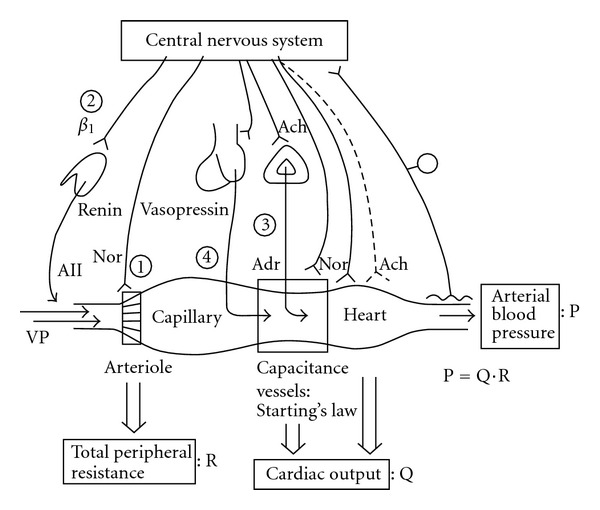Figure 4.

Potential pathways between the central nervous system (CNS) and the cardiovascular system. The CNS regulates the cardiovascular system using various peripheral routs. Arterioles can be regulated by sympathetic neurons and humoral factors of angiotensin II (A II), vasopressin (VP), and adrenaline (Adr), resulting in changes in total peripheral resistance. The heart is regulated by both of parasympathetic and sympathetic neurons and Adr. Capacitance venous vessels are regulated by sympathetic neurons and modify returning blood volume to the heart and cardiac output as predicted by Starling's law. Renal sympathetic neurons can release the enzyme renin from the juxtaglomerular apparatus into the blood via β1 adrenoceptors. The renin produces A II via the renin-angiotensin system. The hypothalamus-pituitary system in the forebrain releases VP into the stream. A II and VP constrict arterioles markedly. Adrenal sympathetic neurons release Adr into the blood. The central nervous system monitors arterial blood pressure with visceral afferents terminated in the big arteries. Ach: acetylcholine, Nor: noradrenaline. circles 1–4; see text.
